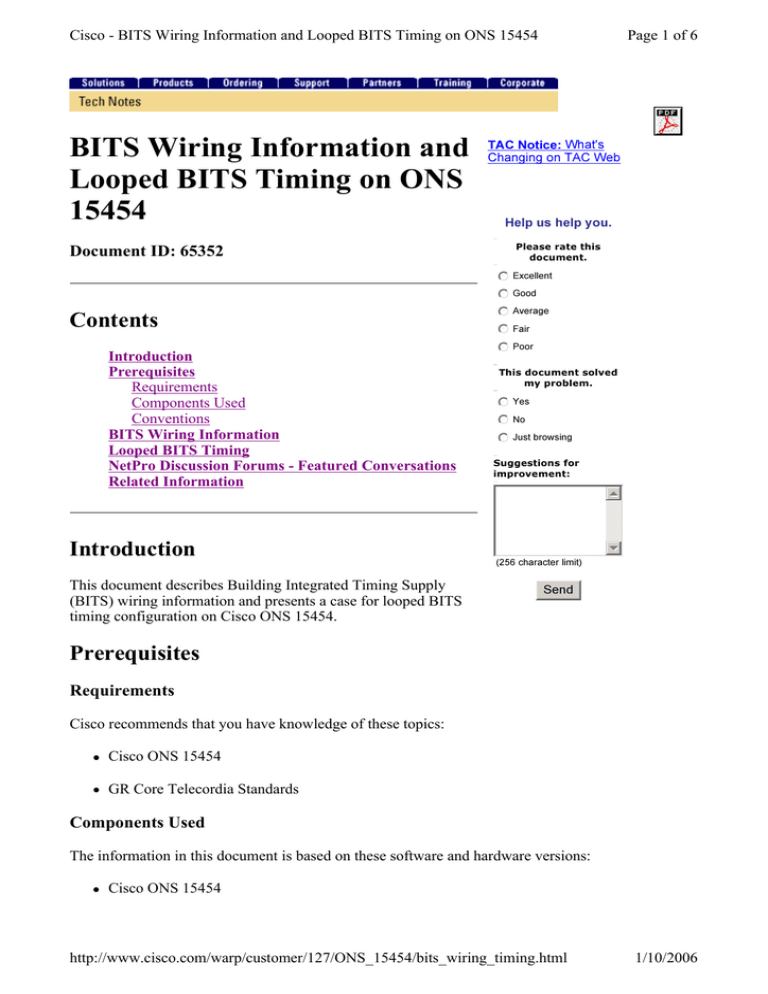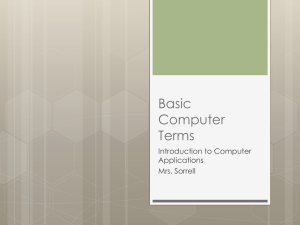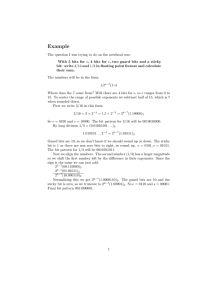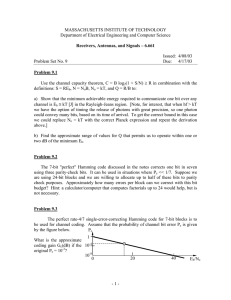
Cisco - BITS Wiring Information and Looped BITS Timing on ONS 15454
BITS Wiring Information and
Looped BITS Timing on ONS
15454
Page 1 of 6
TAC Notice: What's
C han g i n g o n T A C We b
H el p u s h el p y ou .
Please rate this
d o c u m en t.
Document ID: 65352
j Excellent
k
l
m
n
nG
j
k
l
m
Contents
Introduction
Prerequisites
Requirements
Components Used
Conventions
BITS Wiring Information
Looped BITS Timing
NetPro Discussion Forums - Featured Conversations
Related Information
Introduction
This document describes Building Integrated Timing Supply
(BITS) wiring information and presents a case for looped BITS
timing configuration on Cisco ONS 15454.
nA
j
k
l
m
nF
j
k
l
m
jP
k
l
m
n
o o d
v er a g e
a ir
o o r
T his d o c u m en t so lv ed
m y p ro b lem .
nY
j
k
l
m
es
jJ
k
l
m
n
u s t b r o w s i ng
nN
j
k
l
m
o
S u g g estio n s f o r
im p ro v em en t:
( 2 5 6 ch a r a cter li m i t)
Send
Prerequisites
Requirements
Cisco recommends that you have knowledge of these topics:
Cisco ONS 15454
GR Core Telecordia Standards
Components Used
The information in this document is based on these software and hardware versions:
Cisco ONS 15454
http://www.cisco.com/warp/customer/127/ONS_15454/bits_wiring_timing.html
1/10/2006
Cisco - BITS Wiring Information and Looped BITS Timing on ONS 15454
Page 2 of 6
The information in this document was created from the devices in a specific lab environment. All of
the devices used in this document started with a cleared (default) configuration. If your network is
live, make sure that you understand the potential impact of any command.
Conventions
Refer to Cisco Technical Tips Conventions for more information on document conventions.
BITS Wiring Information
Each ANSI chassis has two incoming BITS (1 and 2) ports and two outgoing BITS (1 and 2) ports.
Two pins are assigned for each clock signal as shown in Table 1.
Table 1 – BITS Wiring Chart
External
Function
Device
BITS 1
BITS 2
Tip or
Ring
Contact
Out
A3
Ring
Out
B3
Tip
In
A4
Ring
In
B4
Tip
Out
A1
Ring
Out
B1
Tip
In
A2
Ring
In
B2
Tip
A standard T1/E1 connector contains 8 pins with 4 wires (1, 2, 4 and 5) active. The device type
(DCE or DTE) defines T1 pins as shown in Table 2.
Table 2 – T1 Pin Out
Pin #
Name
DCE
(Network)
DTE
(Customer)
1
R
Tx Ring
Rx Ring
2
T
Tx Tip
Rx Tip
4
R1
Rx Ring
Tx Ring
5
T1
Rx Tip
Tx Tip
Note: Here is the key to the terms in Table 2:
Tx: Transmits out of a terminating device.
Rx: Receives in to a terminating device.
Tip: Positive (+).
http://www.cisco.com/warp/customer/127/ONS_15454/bits_wiring_timing.html
1/10/2006
Cisco - BITS Wiring Information and Looped BITS Timing on ONS 15454
Page 3 of 6
Ring: Negative (-).
When you connect a DCE to a DTE (a typical configuration), you must use a straight through cable.
Otherwise you need a cross-over cable. For example, you need a cross-over cable to connect a DTE
to another DTE, so that a Tx Tip communicates with an Rx Tip, and a Tx Ring communicates with
an Rx Ring. In such a cable, pin 1 of one connector always terminates on pin 4 of the other
connector, and pin 2 of one connector always terminates on pin 5 of the other connector.
Cisco recommends 100-ohm type #22 or #24 AWG shielded twisted pair cable. Category 5 shielded
twisted pair cables meet this criterion. Use solid conductors for tight wrapping. Also, provision line
build out correctly to minimize cable-related issues.
RJ-48C and RC-45 are two common connectors that you can use for T1 termination. Both have eight
pins.
Timing T1/E1 connections involve simplex data, which refers to one-way communication from
timing source to receiver. Therefore, you require only two wires for each timing signal. In order to
ensure that the port does not go down, the provider can provision an internal loopback for the port. In
order to connect BITS clock to BITS In pins, connect ring to ring and tip to tip. For example, for
BITS1 In, you must wire pin 1 to A4 and pin 2 to B4.
For the ETSI chassis, four miniature coaxial connectors provide two inputs and two outputs. You can
find them in slot 24 MIC-C/T/P card on FMEC. The top two connectors are for BITS 1 (In on the
left and Out on the right) and the bottom two connectors are for BITS 2 (In on the left and Out on the
right). The cable is a 75-ohm coaxial cable with a 1.0/2.3 miniature coaxial connector.
Looped BITS Timing
A Mixed timing mode uses both external and line inputs as references. The danger with Mixed
timing is the potential for timing loops. As an alternative to Mixed timing, you can use the BITS
output that you derive from an optical line as an input to a secondary BITS. There are several ways
to wire and provision the looped BITS timing (see Figure 1 for an example).
Figure 1 – ONS 15454 Timing Circuit
http://www.cisco.com/warp/customer/127/ONS_15454/bits_wiring_timing.html
1/10/2006
Cisco - BITS Wiring Information and Looped BITS Timing on ONS 15454
Page 4 of 6
Note: The use of looped BITS configuration does not prevent timing loops. Use the same caution as
with the Mixed mode provisioning.
Wire one of the two BITS Out (BITS 1 Out) directly to the second BITS In pins (see Figure 2).
Figure 2 – A Sample Looped BITS Configuration
http://www.cisco.com/warp/customer/127/ONS_15454/bits_wiring_timing.html
1/10/2006
Cisco - BITS Wiring Information and Looped BITS Timing on ONS 15454
Page 5 of 6
Wire pin A3 is to pin A2 and pin B3 is to pin B2. Wire BITS 1 In as discussed previously.
Provision BITS 2 In as a second external reference, in addition to the BITS from the attached BITS
device (the primary reference). Similarly, wire and provision both NE1 and NE2.
NE4 derives the primary timing from NE1, and secondary timing from NE3. NE3 derives the
primary timing from NE2, and secondary timing from NE4. Enable Source Specific Multicast (SSM)
on all nodes.
In order to activate BITS Out, provision two lines as the timing sources for BITS 1 Out. On NE1, a
port on slot 12 is the primary source and a port on slot 6 is the secondary source. On NE2, slot 6 is
the primary source and slot 12 is the secondary source.
Table 3 shows the timing provisioning information for all four nodes.
Table 3 – Timing Provisioning Information
BITS 1
BITS 1
Out
Out
Primary Secondary
Device
Timing
Primary Secondary Third
Mode
NE1
External
BITS 1
In
BITS 2 In
Internal 12
6
NE2
External
BITS 1
In
BITS 2 In
Internal 6
12
NE3
Line
6
12
Internal -
-
NE4
Line
12
6
Internal -
-
You can analyze at least three failure scenarios for this timing scheme, as explained here:
Scenario 1: BITS Source 1 fails
When BITS Source 1 fails, NE1 switches to BITS 2, which is derived from slot 12 and thus
from BITS Source 2. There is no timing switch on any other nodes.
Scenario 2: Both BITS Source 1 and BITS Source 2 fail
When BITS Source 2 also fails after BITS Source 1 failure, NE2 enters the Holdover mode,
because NE2 receives DUS from slots 6 and 12. All four nodes are timed from the internal
oscillator of NE2.
Scenario 3: BITS Source 1 and the link between NE1 and NE2 fail
When BITS Source 1 fails and the link between NE1 and NE2 fails thereafter, NE1 enters the
Holdover mode because NE1 receives DUS from slot 6. NE4 switches to the secondary source
from NE3, and removes the DUS that NE1 receives. Therefore, NE1 is able to switch to BITS
2 In.
NetPro Discussion Forums - Featured Conversations
Networking Professionals Connection is a forum for networking professionals to share questions,
http://www.cisco.com/warp/customer/127/ONS_15454/bits_wiring_timing.html
1/10/2006
Cisco - BITS Wiring Information and Looped BITS Timing on ONS 15454
Page 6 of 6
suggestions, and information about networking solutions, products, and technologies. The featured
links are some of the most recent conversations available in this technology.
NetPro Discussion Forums - Featured Conversations for Optical
Service Providers: Optical Networking
NEWPTRs, NSEs and PSEs at same rate - Jan 5, 2006
ONS 15454 SDH with 2 ML cards connected to the same RPR - Jan 3, 2006
15454 Ethernet Protection & Provisioning - Jan 3, 2006
back to back ONS15310 CL - Dec 29, 2005
Modal Bandwidth of Fiber - Dec 27, 2005
Service Providers: Metro
Best practises for Hub and spoke Metro Etherent network - Jan 9, 2006
CPUHOG - Jan 8, 2006
Best practices for Voice over MetroRing - Jan 8, 2006
very urgent - Jan 8, 2006
Failover takes long time across different Metro ethernet link - Jan 8, 2006
Related Information
Technical Support & Documentation - Cisco Systems
All contents are Copyright © 1992-2005 Cisco Systems, Inc. All rights reserved. Important Notices and Privacy
Statement.
Updated: Aug 17, 2005
Document ID: 65352
http://www.cisco.com/warp/customer/127/ONS_15454/bits_wiring_timing.html
1/10/2006







